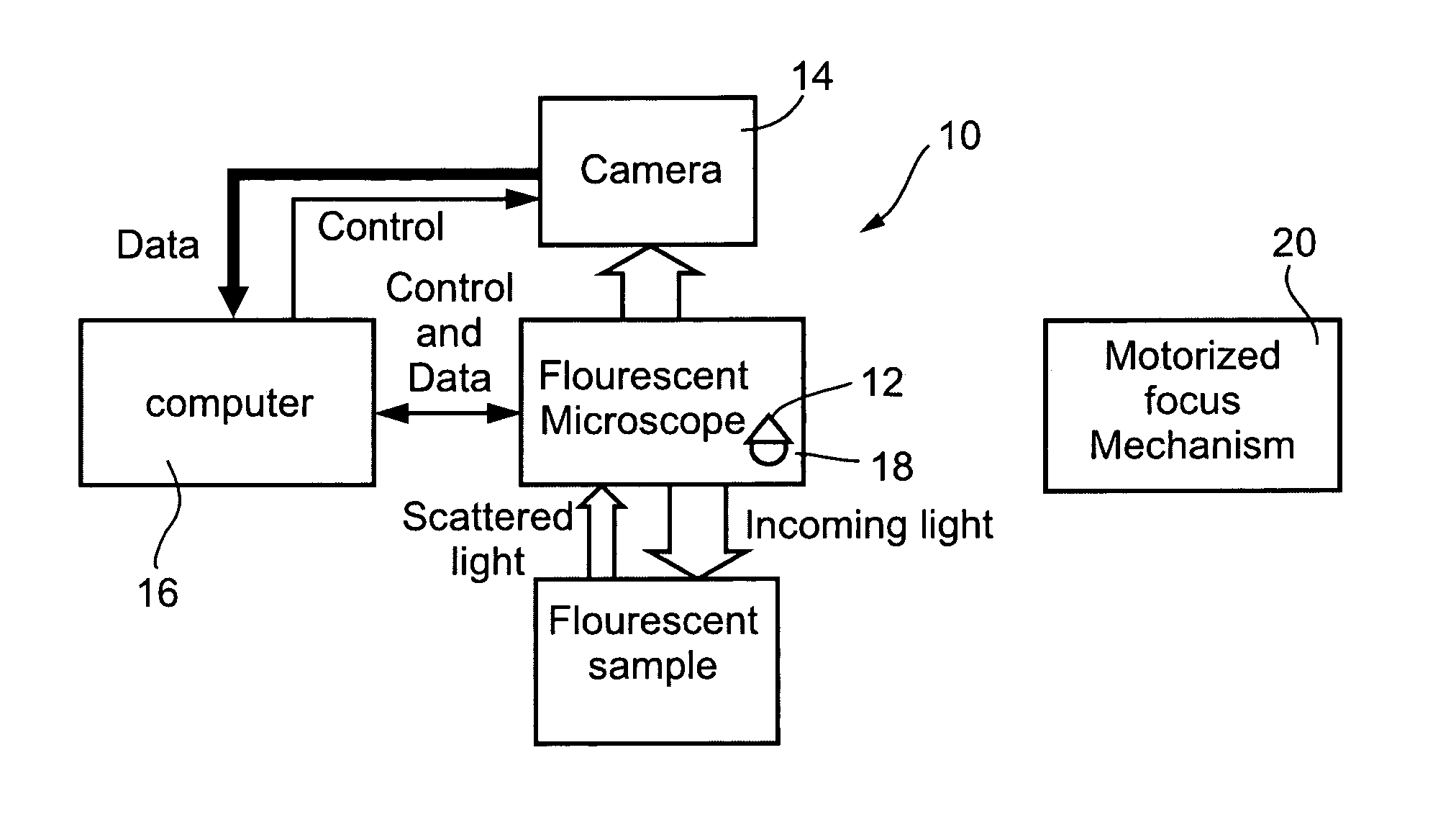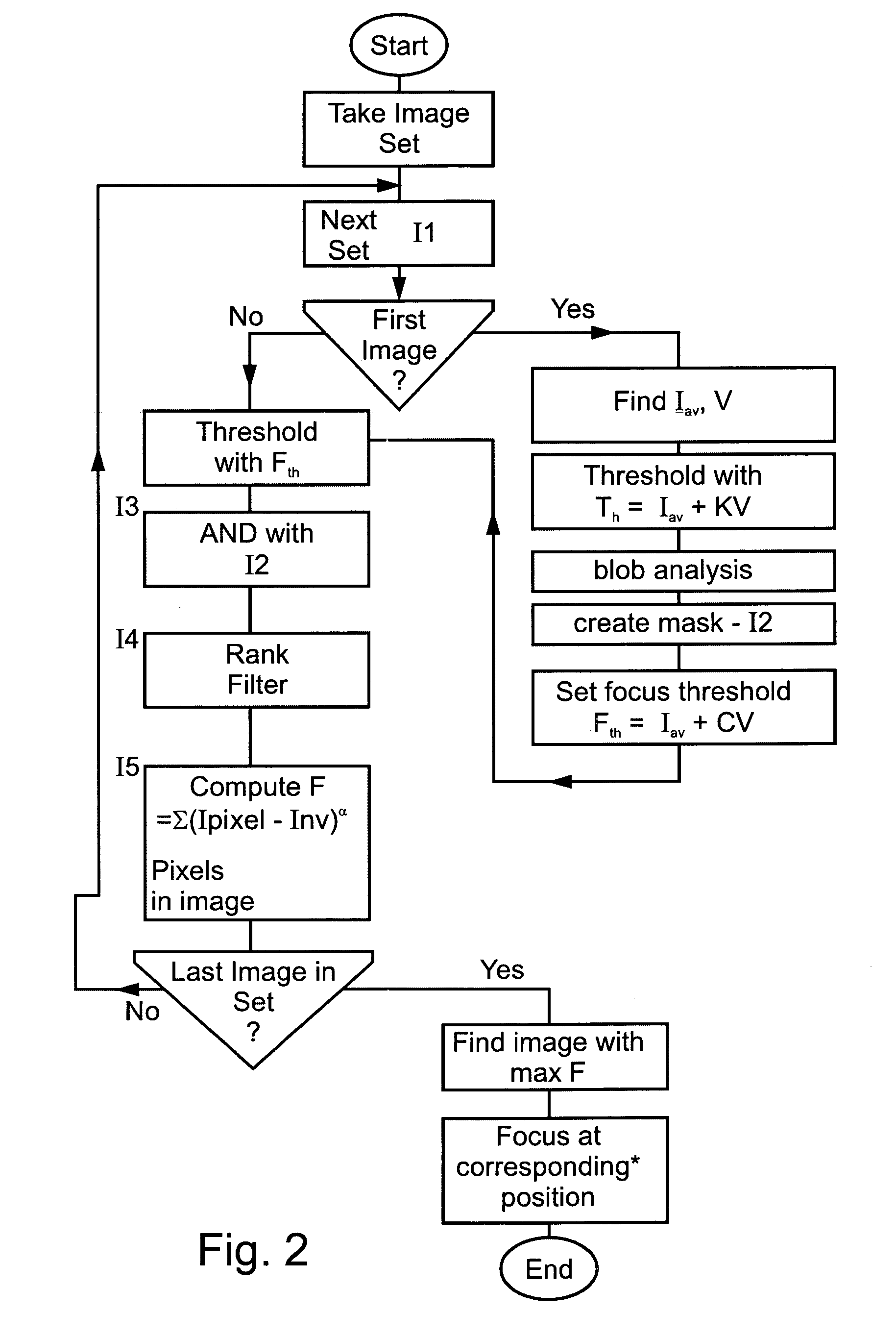Image focusing in fluorescent imaging
a fluorescent imaging and image technology, applied in the field of image focusing for image capture, can solve the problems of large rate-limiting step of focusing, inability of current systems to distinguish between genuine details and noise, and sensitive to noise, and achieve the effect of rapid focus and fast throughpu
- Summary
- Abstract
- Description
- Claims
- Application Information
AI Technical Summary
Benefits of technology
Problems solved by technology
Method used
Image
Examples
Embodiment Construction
[0112]Reference is now made to FIG. 1, which is a generalized diagram showing fluorescent imaging apparatus for taking images of fluorescing samples. An apparatus 10 comprises a fluorescent microscope 12, connected to a camera 14 and to a motorized focus mechanism 20, all of which are connected to a computer 16. The computer is preferably connected to receive data from and to control both the camera and the motorized focus 20. The microscope 12 preferably comprises an illumination source 18 for illuminating a fluorescent sample. Emitted, reflected and fluorescent light is received back at the microscope 12.
[0113]As is common in microscopy, the illumination source 18 is preferably situated behind the objective lens of microscope 12, so as to illuminate the sample via the objective lens. Such a form of illumination has two effects, firstly that it concentrates illumination in the focal plane and secondly that it reduces noise in the image since the microscope picks up only emitted lig...
PUM
| Property | Measurement | Unit |
|---|---|---|
| focusing time | aaaaa | aaaaa |
| exposure time | aaaaa | aaaaa |
| distance | aaaaa | aaaaa |
Abstract
Description
Claims
Application Information
 Login to View More
Login to View More - R&D
- Intellectual Property
- Life Sciences
- Materials
- Tech Scout
- Unparalleled Data Quality
- Higher Quality Content
- 60% Fewer Hallucinations
Browse by: Latest US Patents, China's latest patents, Technical Efficacy Thesaurus, Application Domain, Technology Topic, Popular Technical Reports.
© 2025 PatSnap. All rights reserved.Legal|Privacy policy|Modern Slavery Act Transparency Statement|Sitemap|About US| Contact US: help@patsnap.com



